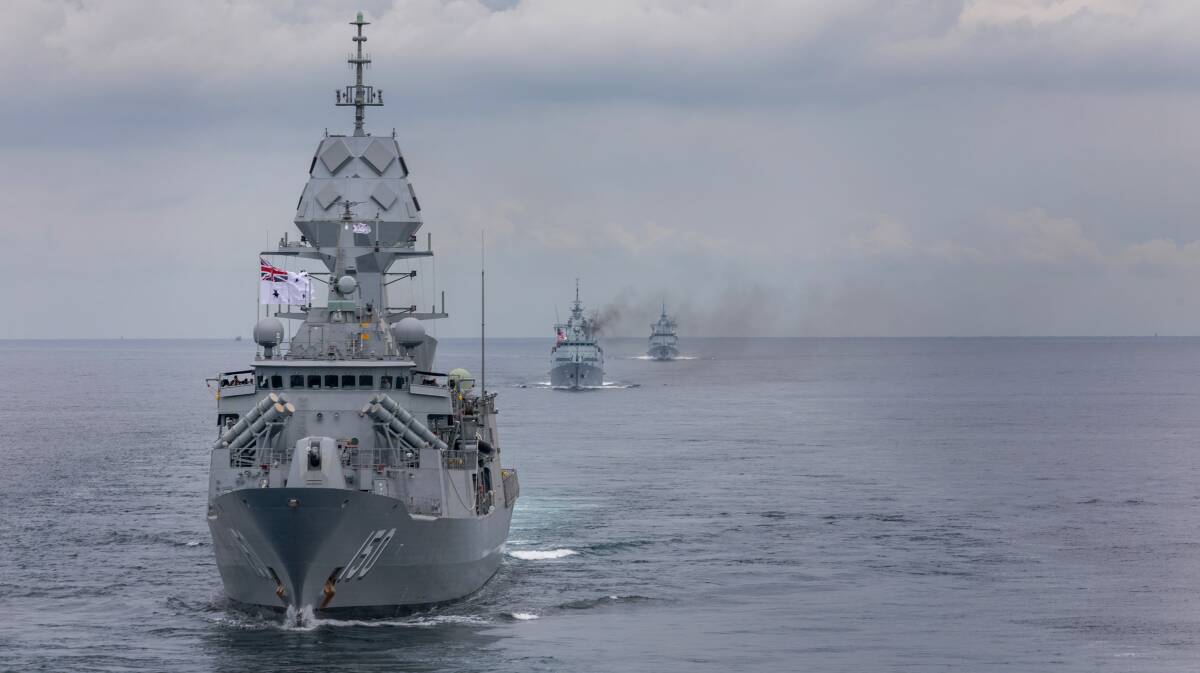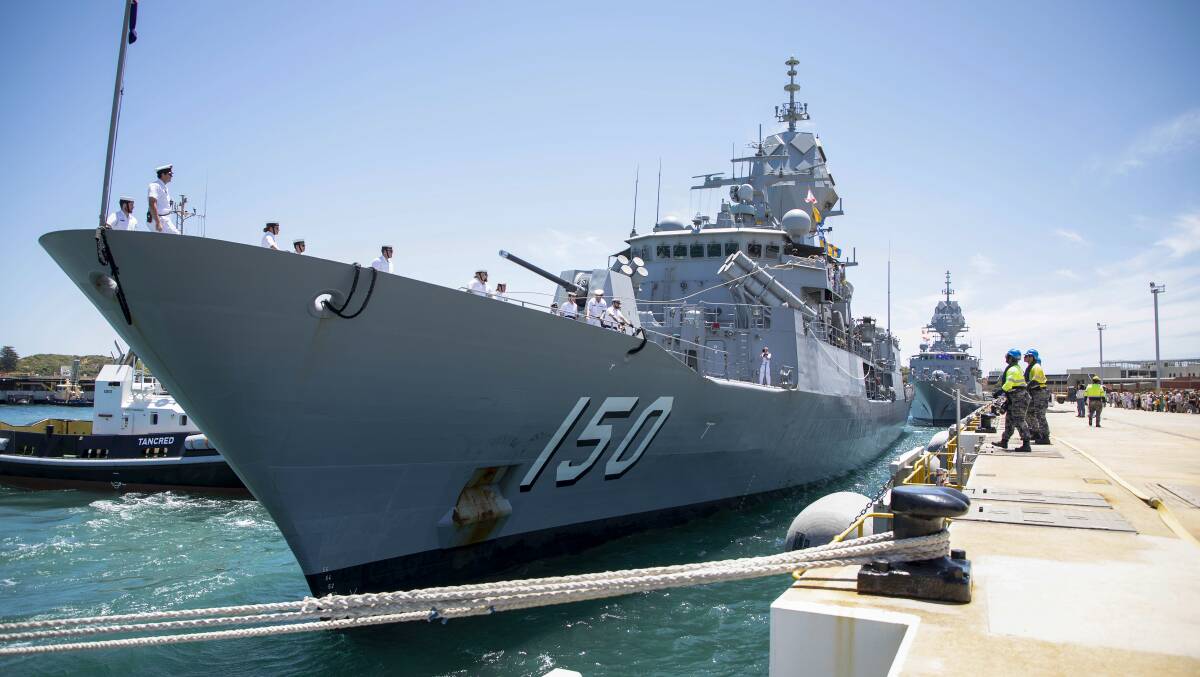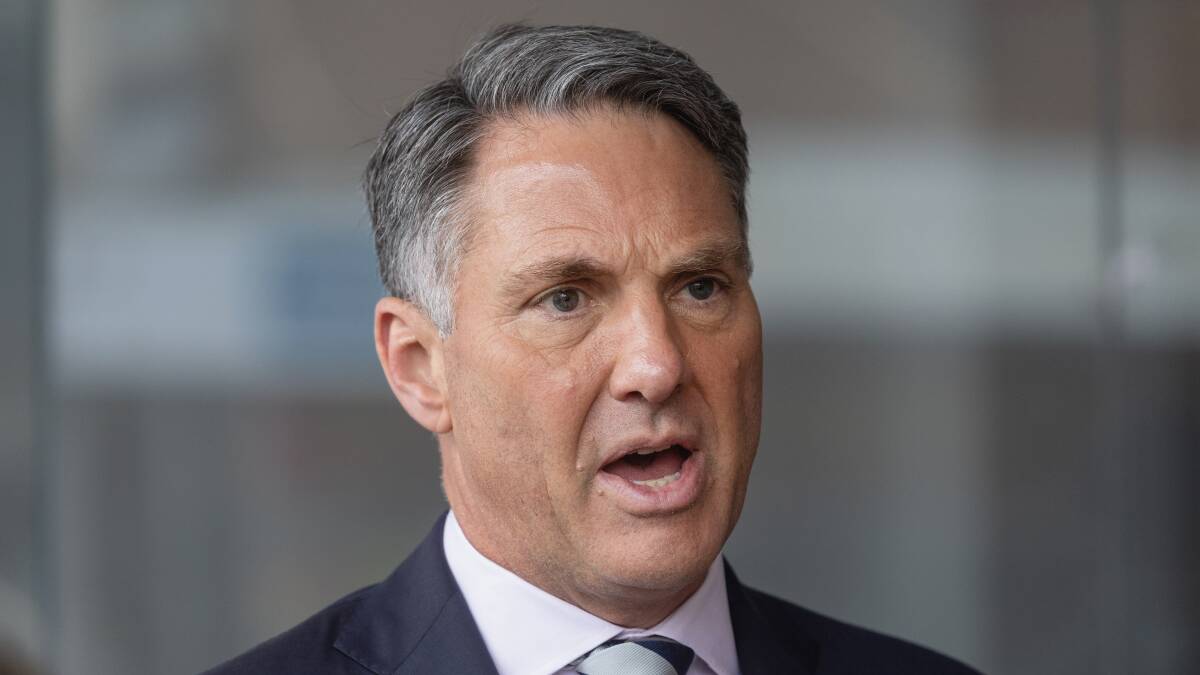The Albanese government is weakening Australia's navy amid our most dangerous times since World War II.
Forget Defence Minister Richard Marles's exciting talk of expanding the combat fleet to 26 ships by the late 2040s. Maybe it will happen. Probably it won't.
Far more important than his pie in the sky is his outrageous here-and-now decision to immediately decommission one of the 11 combat ships we already have and to retire another in 2026, years before replacements will be built. And this is happening as US officials warn of China preparing for war in the next few years. Is the government serious about national security?
The disgrace goes beyond discarding a pair of valuable ships within two years. They are only part of the Anzac class of eight frigates. Under a decision that Marles included in this week's future fleet plan, all Anzacs will be robbed of extended service lives that the Coalition planned for them.

Retiring them earlier than necessary will depress the size of the fleet for more than a decade.
Remarkably effective for their modest size, the Anzacs need big overhauls that the government won't pay for. Instead, Marles prefers to discuss ships that don't exist yet and, as plenty of Australian defence-acquisition history tells us, may never exist, or won't arrive on time, or won't perform as promised, etcetera.
It's always "jam tomorrow" when this government talks about defence.
Marles's excuse is that orders for some of the projected (imagined? hoped-for? dreamed-about?) ships of the future will be accelerated, so Anzac overhauls won't be needed. It's an excuse that doesn't stand a moment's scrutiny, because none of the new ships will arrive before 2029 and we're not likely to get eight until the mid 2030s. Even the youngest Anzac is due to run out of life in 2033.
HMAS Anzac, the first member of the class, has already been pulled from service and is now only nominally part of the fleet. Marles says it will formally be decommissioned soon, with sibling HMAS Arunta to follow in 2026.
The irresponsibility of doing that is worse than it looks, because the Anzacs, far from being obsolete, are advanced and effective warships.
They were weak when they were completed between 1996 and 2006. But since then they have been powerfully upgraded, notably with advanced radars from Canberra company CEA Technologies. The radars multiply the power of the ships' weapon systems, particularly the ESSM interceptor missiles that they would use to defend themselves and ships under their protection.

These days, the Anzacs are indeed among the best warships of their size ever built anywhere.
Their problem is that, while their sensors and weapon systems are excellent, their hulls and innards - machinery, pipes, pumps, electrics and so on - are old. Each Anzac is in the position of an elderly person with a tip-top intellect but a failing body.
A hospital may be unable to save the human invalid, but a dockyard can fix a frigate. Labor blames the Coalition for bequeathing these old ships on it, but the former government also left it with an answer, the overhaul program, called Transcap.
In 2020 it was included in a budget of up to $2 billion to prolong the ships' lives. That's $250 million per frigate, peanuts in the world of Australian naval construction. And the work reportedly would give each Anzac another nine years of life.
Why on earth would the government not proceed with that? Well, it would involve spending money now - on Anzac. There's that word the Albanese government finds so disagreeable in defence policy: "now".
So we can expect Anzac to be stripped of useful parts then scuttled somewhere as a fishing reef. And that would be the government handling a valuable public asset for you.
Are you reminded of Taipan helicopters?
Anzac is in very bad condition, Marles says, but that should come as no great surprise. Ships wear out at variable and somewhat unpredictable rates. But even if Anzac needs $350 million of work, spending the money would well justified.
Economy isn't really the point. The overriding issue is that these are dangerous times and there is no way we should be reducing the fleet.

The policy does in fact mean a reduction in naval power in the period of maximum danger, the latter 2020s and early 2030s, says Malcolm Davis, an analyst with the Australian Strategic Policy Institute. He sees hope that later in the 2030s the US will be better prepared militarily to counter China, whose economy may by then have weakened further.
Let's put the Anzac issue another way. The ships are real. They exist. We have them, and they have definite combat value.
New general-purpose frigates that Marles says will enter service beginning in 2029 do not exist, and the program could become an utter mess like so many defence acquisition efforts before it.
Actually, you may be surprised to hear that none of the candidate frigate designs is incomparably superior to our old Anzacs. Some have larger magazines, a definite advantage, but I won't be surprised if all have inferior radars.
READ MORE:
The new frigates are supposed to be 11 ships in the 2040s force of 26. The others would be our three current Hobart-class destroyers, six Hunter class frigates already programmed for a ridiculously high cost, and six ships, basically supplementary missile carriers, that could sail without crews if necessary.
But here's a question for Mr Marles: if it's so important to have 26 combat ships in the 2040s, how can it be acceptable to cut our fleet from 11 to nine in the 2020s?
- Bradley Perrett was based in Beijing as a journalist from 2004 to 2020.


